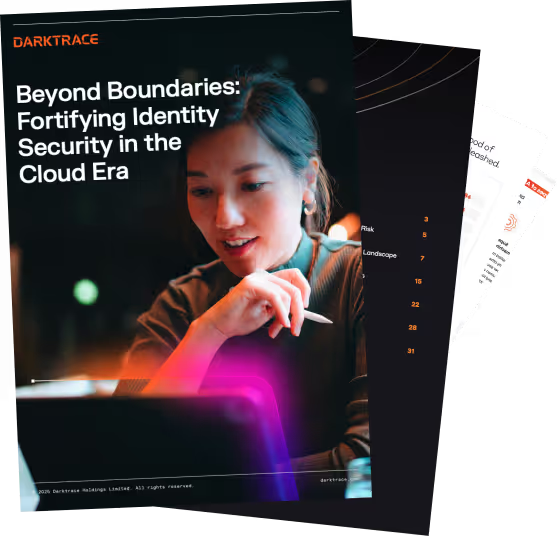The latest on the identity security landscape
Following the mass adoption of remote and hybrid working patterns, more critical data than ever resides in cloud applications – from Salesforce and Google Workspace, to Box, Dropbox, and Microsoft 365.
On average, a single organization uses 130 different Software-as-a-Service (SaaS) applications, and 45% of organizations reported experiencing a cybersecurity incident through a SaaS application in the last year.
As SaaS applications look set to remain an integral part of the digital estate, organizations are being forced to rethink how they protect their users and data in this area.
What is SaaS security?
SaaS security is the protection of cloud applications. It includes securing the apps themselves as well as the user identities that engage with them.
Below are the top eight threats that target SaaS security and user identities.
1. Account Takeover (ATO)
Attackers gain unauthorized access to a user’s SaaS or cloud account by stealing credentials through phishing, brute-force attacks, or credential stuffing. Once inside, they can exfiltrate data, send malicious emails, or escalate privileges to maintain persistent access.
2. Privilege escalation
Cybercriminals exploit misconfigurations, weak access controls, or vulnerabilities to increase their access privileges within a SaaS or cloud environment. Gaining admin or superuser rights allows attackers to disable security settings, create new accounts, or move laterally across the organization.
3. Lateral movement
Once inside a network or SaaS platform, attackers move between accounts, applications, and cloud workloads to expand their foot- hold. Compromised OAuth tokens, session hijacking, or exploited API connections can enable adversaries to escalate access and exfiltrate sensitive data.
4. Multi-Factor Authentication (MFA) bypass and session hijacking
Threat actors bypass MFA through SIM swapping, push bombing, or exploiting session cookies. By stealing an active authentication session, they can access SaaS environments without needing the original credentials or MFA approval.
5. OAuth token abuse
Attackers exploit OAuth authentication mechanisms by stealing or abusing tokens that grant persistent access to SaaS applications. This allows them to maintain access even if the original user resets their password, making detection and mitigation difficult.
6. Insider threats
Malicious or negligent insiders misuse their legitimate access to SaaS applications or cloud platforms to leak data, alter configurations, or assist external attackers. Over-provisioned accounts and poor access control policies make it easier for insiders to exploit SaaS environments.
7. Application Programming Interface (API)-based attacks
SaaS applications rely on APIs for integration and automation, but attackers exploit insecure endpoints, excessive permissions, and unmonitored API calls to gain unauthorized access. API abuse can lead to data exfiltration, privilege escalation, and service disruption.
8. Business Email Compromise (BEC) via SaaS
Adversaries compromise SaaS-based email platforms (e.g., Microsoft 365 and Google Workspace) to send phishing emails, conduct invoice fraud, or steal sensitive communications. BEC attacks often involve financial fraud or data theft by impersonating executives or suppliers.
BEC heavily uses social engineering techniques, tailoring messages for a specific audience and context. And with the growing use of generative AI by threat actors, BEC is becoming even harder to detect. By adding ingenuity and machine speed, generative AI tools give threat actors the ability to create more personalized, targeted, and convincing attacks at scale.
Protecting against these SaaS threats
Traditionally, security leaders relied on tools that were focused on the attack, reliant on threat intelligence, and confined to a single area of the digital estate.
However, these tools have limitations, and often prove inadequate for contemporary situations, environments, and threats. For example, they may lack advanced threat detection, have limited visibility and scope, and struggle to integrate with other tools and infrastructure, especially cloud platforms.
AI-powered SaaS security stays ahead of the threat landscape
New, more effective approaches involve AI-powered defense solutions that understand the digital business, reveal subtle deviations that indicate cyber-threats, and action autonomous, targeted responses.
[related-resource]
Beyond Boundaries: Fortifying Identity Security in the Cloud Era
Learn more about AI-powered solutions for SaaS security and find a checklist for what to look for in vendors in this white paper.






































.jpg)